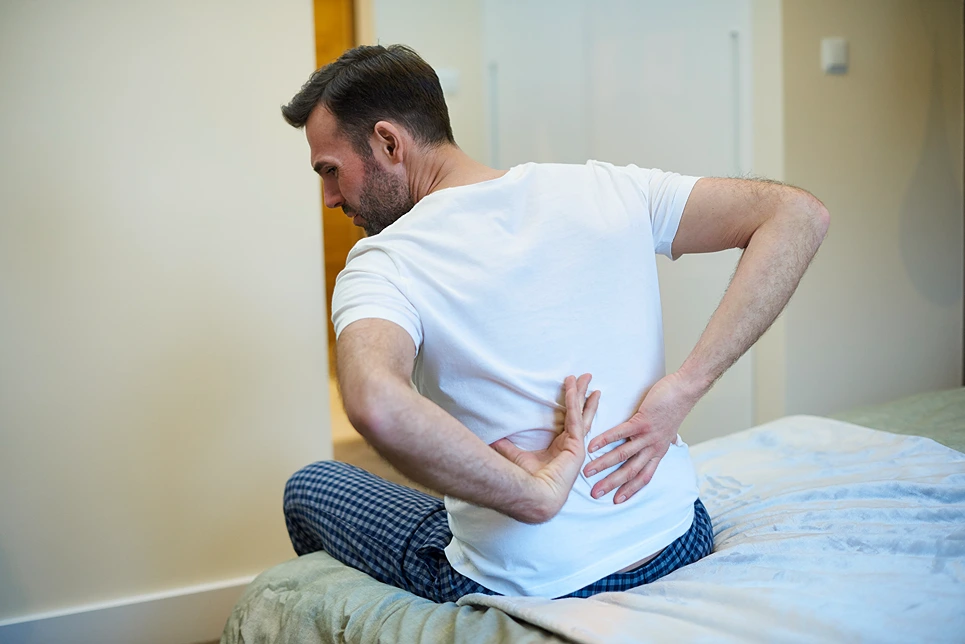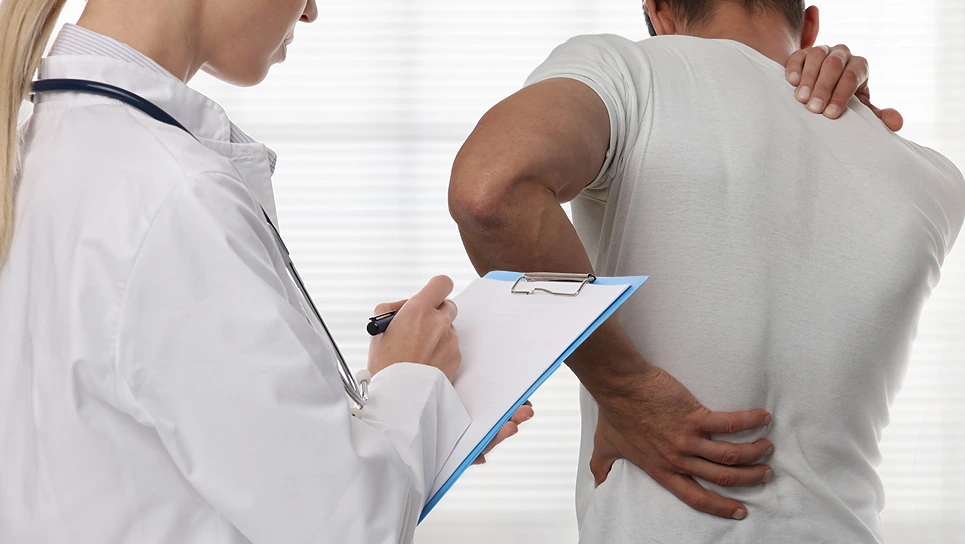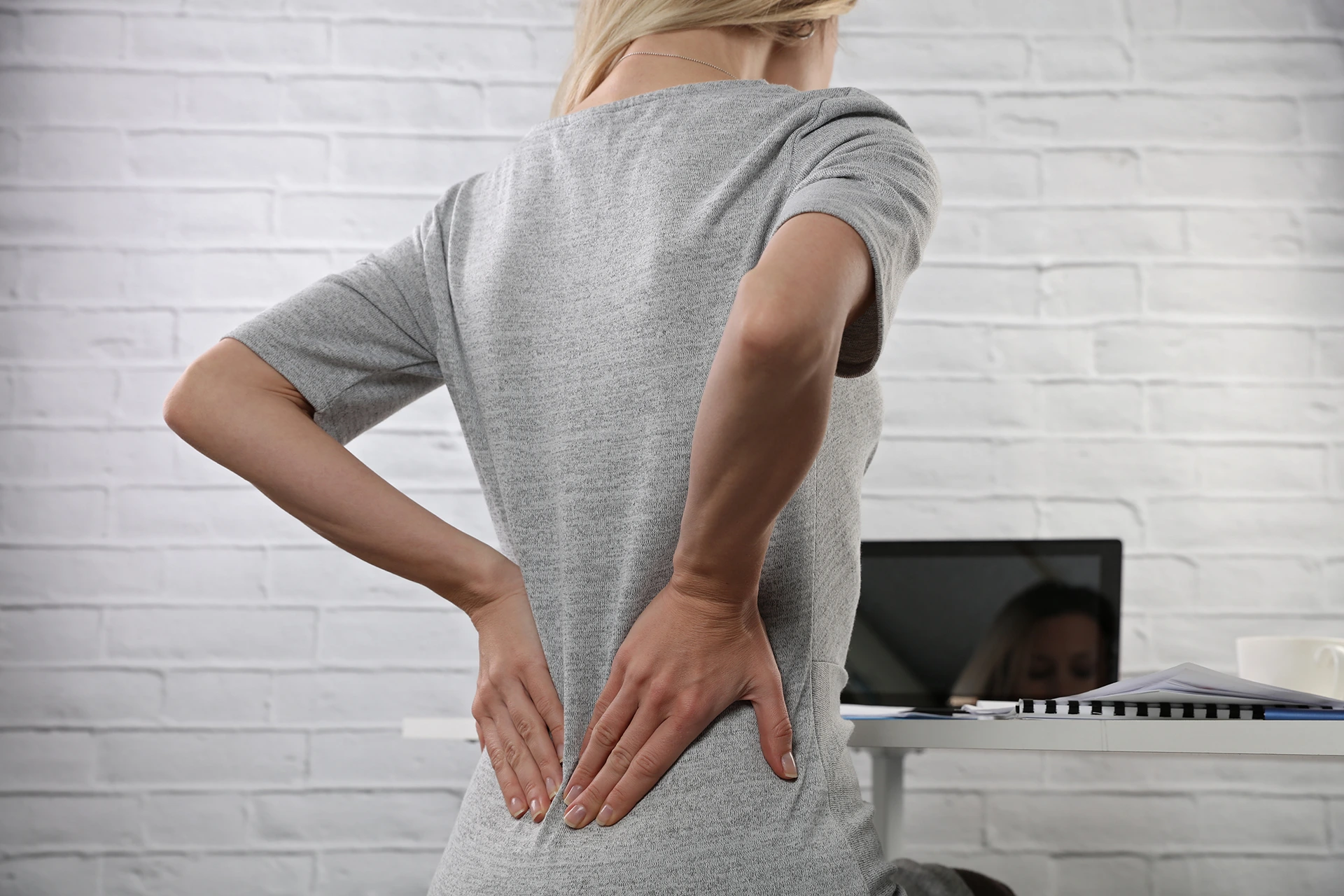Did you know that one potential cause of persistent upper back discomfort is gastritis? Here at Kaly, we want to empower you with the knowledge to identify when gastritis may be behind your back pain, and how to properly treat it.
What is Gastritis?
Gastritis refers to inflammation and irritation of the stomach lining. It can be either acute or chronic, and has a wide range of causes including H. pylori infection, bile reflux, excessive alcohol use, chronic stress, and certain medications. Common symptoms are burning abdominal pain, nausea, vomiting, bloating, and loss of appetite. But gastritis can also manifest as upper back pain between your shoulder blades due to shared nerve connections between your stomach and spine.
How to Recognize Gastritis Back Pain
The upper back pain caused by gastritis usually feels like a dull, constant ache or tightness in the area between your shoulder blades. You may also experience:
- Increased discomfort after eating meals
- Improvement with rest and avoidance of trigger foods
- Accompanying gastric symptoms like heartburn or indigestion
- General fatigue and body aches
Answering Some Common Questions About Gastritis Back Pain

We at Kaly know that living with gastritis back pain can be confusing and overwhelming. You likely have so many questions about the symptoms, causes, and best treatment options.
That’s why we’ve put together an extensive, in-depth FAQ all about managing gastritis and relieving associated back pain. Browse through the topics that interest you most to get answers from our team of experts.
What are the symptoms of gastritis back pain?
Many people with gastritis also experience back pain. The back pain associated with gastritis typically occurs in the upper back, between the shoulder blades. It may feel like a dull, aching pain or a sharp, stabbing sensation. The back pain can range from mild to severe.
Other gastritis symptoms that may accompany upper back pain include:
- Heartburn or acid reflux
- Abdominal bloating and fullness
- Belching
- Indigestion
- Fatigue
- Feeling of heaviness after eating
- Tenderness in the upper abdomen
The back pain stems from the stomach inflammation spreading to affect the nerves that run from the stomach to the back. The abdominal pain from the gastritis can also cause you to tense the muscles in your back, resulting in back aches and spasms.
How is gastritis back ache different from regular back pain?
There are some key differences between back pain caused by gastritis versus back pain from a musculoskeletal injury or poor posture:
- Location – Gastritis back pain is usually higher up, between the shoulder blades or in the upper back. Regular back pain often occurs in the lower back.
- Timing – Back pain from gastritis may come and go but frequently occurs after eating. Mechanical back pain is also episodic but not necessarily tied to eating.
- Nature of pain – Gastritis back pain tends to be a steady, dull ache, versus the sharp, stabbing pain of a muscle strain or spasm.
- Associated symptoms – Gastritis back pain is accompanied by abdominal symptoms like nausea, stomach discomfort, reflux, etc. Mechanical back pain is isolated to the back.
- Exacerbating factors – Gastritis back pain worsens after eating, but improves with rest. Muscular back pain flares with movement and physical activity.
Can gastritis and back ache occur together?
Yes, gastritis and back ache often do occur together. Inflammation from gastritis can spread to the nerves connecting the stomach and back, causing referred pain signals that travel up to the upper back. This radiating upper back ache is common in people with acute or chronic gastritis.
Is back pain a sign of gastritis?
Back pain can, in some cases, be a sign of gastritis. Gastritis is the irritation and inflammation of the stomach lining. The inflammation can stimulate nerves that run from the stomach to the spine, causing upper back pain. So while gastritis itself affects the stomach, it can manifest as back pain in some individuals.
Upper back pain between the shoulder blades is the most common location of referred back pain from gastritis. This upper back ache may occur on its own or be accompanied by other symptoms like:
- Burning stomach pain
- Nausea and vomiting
- Bloating and burping
- Loss of appetite
- Fatigue
- Abdominal tenderness
Can gastritis cause both back pain and chest pain?
Yes, it’s possible for gastritis to cause both back pain and chest pain. The stomach inflammation from gastritis can irritate the nerves connecting the digestive system to the spine and chest. This can refer pain signals up to these areas, causing achy or stabbing sensations even though the stomach itself is the root problem.
Upper back pain is a common referred pain linked to gastritis, since the stomach has nerve connections to the thoracic spine. Chest pain can also occur because the nerves from the stomach travel up to the chest wall. The medical term for this is “referred pain,” meaning you feel the pain from an internal problem at a secondary location on the surface of the body.
Is back pain a sign of gastritis?
Back pain can, in some cases, be a sign of gastritis. Gastritis is the irritation and inflammation of the stomach lining. The inflammation can stimulate nerves that run from the stomach to the spine, causing upper back pain. So while gastritis itself affects the stomach, it can manifest as back pain in some individuals.
What are the signs of gastritis back pain in a woman?
Gastritis back pain may manifest a bit differently in women versus men. Some key signs that may indicate a woman has gastritis causing upper back pain include:
- Dull, aching pain between the shoulder blades after eating
- Upper back pain and stiffness that is worse in the morning
- Tender spots along the bra line in the mid and upper back
- Back spasms at night that disrupt sleep
- Nausea and loss of appetite, especially in early pregnancy
- Frequent belching and abdominal bloating
- Fatigue, body aches, and headache
- Relief from back pain after vomiting or having a bowel movement
Women are more prone to certain types of gastritis, like chronic autoimmune gastritis and helicobacter pylori infections. Their back pain may fluctuate with the menstrual cycle due to hormonal shifts.
Pregnant women with gastritis back pain may find it worsens in the 3rd trimester as the growing uterus pushes on the inflamed stomach.
Does gastritis cause back pain on the left side?
It’s possible for gastritis to cause left-sided back pain in some people. The stomach has nerve connections on both sides of the spine. When the stomach becomes inflamed due to gastritis, it can send pain signals through these nerves up to the upper back area.
For some individuals, the pain radiates more to the left side between the shoulder blades or underneath the shoulder. This is likely due to the way nerve signals transmit through the thoracic spinal cord to the brain during gastritis episodes. The brain may interpret the signals primarily on the left, even though the stomach itself is in the middle of the abdomen.
Does gastritis cause back pain on the right side?
Similar to left-sided back pain, gastritis can also sometimes cause referred pain to the right upper back. The stomach has nerve connections sending signals to both sides of the thoracic spine. When inflamed from gastritis, the stomach may transmit more pain signals to the right nerves, causing upper back ache on that side.
Right-sided upper back pain related to gastritis may feel like:
- Dull, constant ache between shoulder blade and spine
- Tenderness when pressing on right back muscles
- Stabbing pain when taking deep breaths
- Increased discomfort when bending or twisting
- Improved with rest and aggravated by eating
What is the treatment for gastritis symptoms back pain?
To treat gastritis back pain, the goal is to reduce the stomach inflammation causing the referred upper back discomfort. Typical medical treatments for gastritis back pain include:
- Antacids like Maalox and Tums to neutralize stomach acid
- H2 blockers such as famotidine (Pepcid) or ranitidine (Zantac) to reduce acid production
- Proton pump inhibitors like omeprazole (Prilosec) or esomeprazole (Nexium) to block acid secretion
- Antibiotics if H. pylori bacteria is causing the gastritis
- Cytoprotective agents like sucralfate that coat and protect the stomach lining
- Pain medications such as Tylenol or prescription NSAIDs
- Muscle relaxants like cyclobenzaprine (Flexeril) to relieve upper back spasms
- Physical therapy modalities such as ultrasound, heat, and massage
Making dietary modifications can also help minimize gastritis flare-ups and related back pain. Avoiding acidic, spicy, fried, or fatty foods that irritate the stomach may significantly ease gastritis symptoms.
Get the Right Care Team on Your Side

Finding knowledgeable doctors and specialists who understand the link between your gastritis and back pain is so important, but can feel overwhelming.
At Kaly, our platform can connect you with top gastrointestinal specialists, pain management clinics, physical therapists, and other providers in your area who are equipped to properly diagnose and treat your gastritis back pain.
